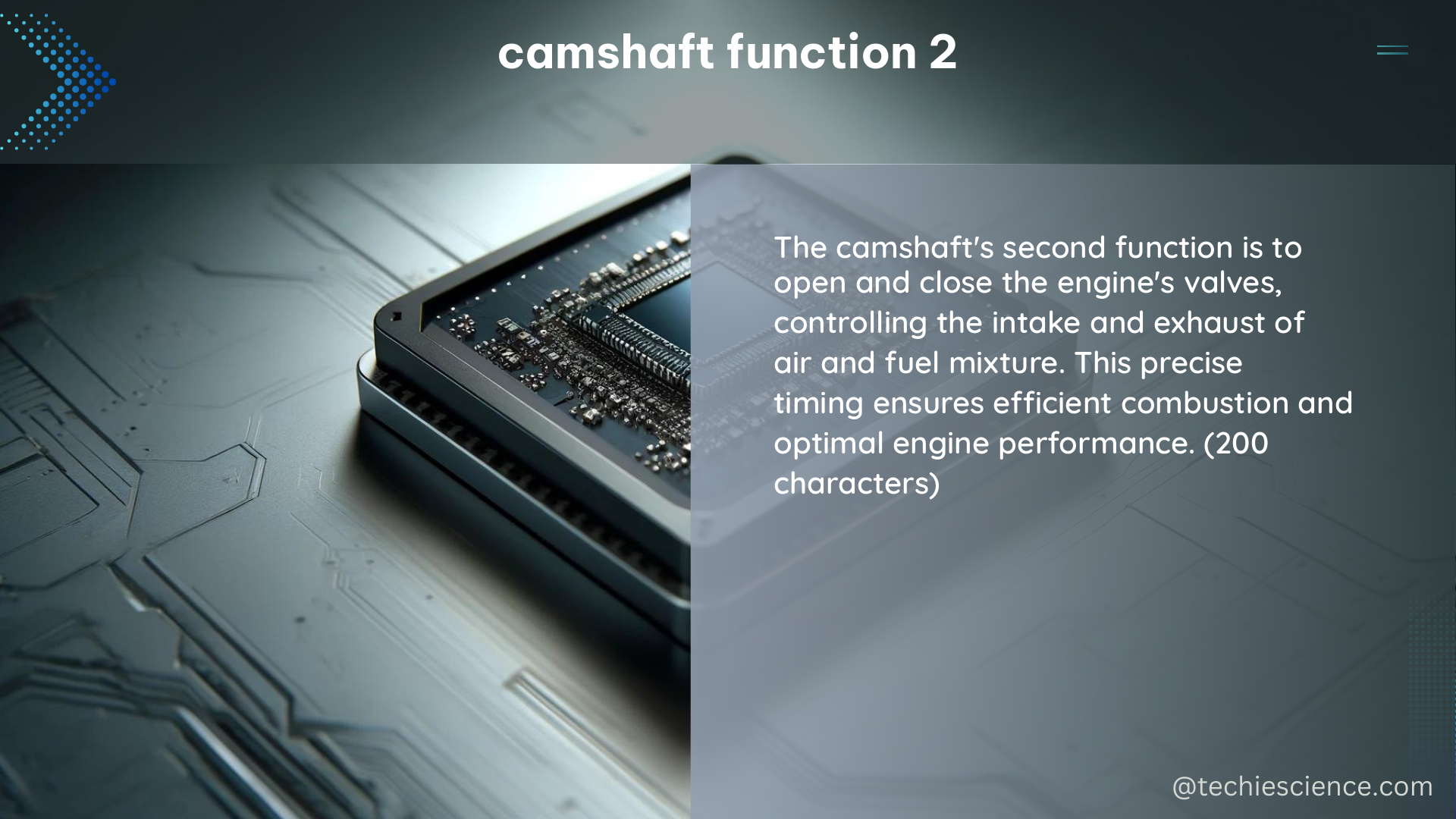The camshaft is a critical component in an internal combustion engine, responsible for precisely controlling the opening and closing of the intake valves in the engine’s cylinders. Camshaft function 2 is a crucial aspect of this system, directly impacting the engine’s performance by regulating the flow of air and fuel into the cylinders during the intake stroke.
Understanding Camshaft Lift
The lift of a camshaft is the maximum distance the valve is lifted off its seat during operation. This measurement is typically expressed in millimeters or inches and can range from 0.2 to 0.6 inches for most passenger car engines. The lift of the camshaft is a critical factor in determining the engine’s volumetric efficiency, as it directly affects the amount of air and fuel that can enter the cylinders.
Camshaft Duration and Overlap

The duration of a camshaft is the amount of time the valve is open during each revolution of the camshaft. This is typically measured in degrees of crankshaft rotation and can range from 200 to 300 degrees for most passenger car engines. The overlap is the amount of time both the intake and exhaust valves are open simultaneously, which is measured in degrees of crankshaft rotation and can range from 20 to 60 degrees.
These two parameters, duration and overlap, work together to control the engine’s breathing and can have a significant impact on the engine’s power output, torque, and efficiency.
Lobe Separation Angle (LSA)
The Lobe Separation Angle (LSA) is the angle between the centerlines of the intake and exhaust lobes on the camshaft. This angle is typically measured in degrees and can range from 100 to 115 degrees for most passenger car engines. The LSA is an important factor in determining the engine’s power characteristics, as it affects the overlap between the intake and exhaust events.
Camshaft Clearance
In addition to the lift, duration, overlap, and LSA, the clearance between the camshaft lobes and the lifters is also a critical specification. This clearance, typically measured in thousandths of an inch, ensures proper valve operation and prevents premature wear or damage to the camshaft and other engine components.
Camshaft Maintenance and Repair
When it comes to DIY maintenance and repair of camshaft function 2, it is essential to use the correct tools and techniques. This includes using a camshaft degree wheel to accurately set the cam timing, as well as specialized tools to remove and install the camshaft bearings.
Additionally, it is crucial to use high-quality replacement parts when servicing the camshaft, such as new camshaft bearings, lifters, and other components. This ensures proper operation and longevity of the engine.
Camshaft Specifications and Tuning
To optimize the performance of your engine, it is important to understand the specific camshaft specifications and how they can be tuned. This includes adjusting the lift, duration, overlap, and LSA to achieve the desired power characteristics.
For example, increasing the lift and duration of the camshaft can result in higher peak power, but may also lead to reduced low-end torque and increased fuel consumption. Adjusting the overlap can affect the engine’s idle quality and emissions.
By carefully considering these camshaft specifications and making the appropriate adjustments, you can fine-tune your engine’s performance to meet your specific needs.
Conclusion
Camshaft function 2 is a critical component in an internal combustion engine, and understanding its technical specifications and maintenance requirements is essential for optimal engine performance. By mastering the concepts of lift, duration, overlap, LSA, and clearance, you can effectively maintain, repair, and tune your engine’s camshaft to achieve the desired power, efficiency, and reliability.
Remember to always use the correct tools and high-quality replacement parts when servicing the camshaft, and refer to the resources provided for further guidance on camshaft design, manufacture, and failure analysis.
References:
- Camshaft Design and Manufacture
- Camshaft Specifications and Tuning
- Camshaft Failure Analysis and Prevention

The lambdageeks.com Core SME Team is a group of experienced subject matter experts from diverse scientific and technical fields including Physics, Chemistry, Technology,Electronics & Electrical Engineering, Automotive, Mechanical Engineering. Our team collaborates to create high-quality, well-researched articles on a wide range of science and technology topics for the lambdageeks.com website.
All Our Senior SME are having more than 7 Years of experience in the respective fields . They are either Working Industry Professionals or assocaited With different Universities. Refer Our Authors Page to get to know About our Core SMEs.